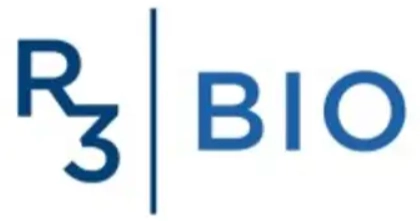Lifespan Research Institute invests in the future of regenerative medicine by providing funding and support to promising biotechnology startups.
This page introduces some of the companies that LRI has empowered to become key players in making the first regenerative medicine therapies a reality for patients sooner rather than later.
Cyclarity Therapeutics
Cyclarity Therapeutics, Inc., is pursuing a mission to treat the underlying causes of age-related disease. The company develops simple and direct interventions targeting toxic forms of cholesterol using rationally designed molecules to provide the first true disease modifying treatments for age-related diseases such as atherosclerosis, hypercholesterolemia, heart failure, and macular degeneration. Its products are based on novel derivatives of a well-known, safe compound and a new way of looking at cardiovascular disease created through a Lifespan Research Institute program.
Developing easy-to-use drugs that prevent common age-related conditions such as atherosclerosis, heart-attack and stroke by addressing the root cause – a build-up of arterial plaque.
Repair Biotechnologies
Repair Biotechnologies is a late preclinical-stage biotech company developing several first-in-class therapies based on the Cholesterol Degrading Platform (CDP).
By safely breaking down excess cholesterol, Repair believes that CDP can repair the failure of reverse cholesterol transport that is at the heart of atherogenesis. Rather than accumulating to make macrophages dysfunctional, excess cholesterol will instead be catabolized.
Repair Biotechnologies develops the Cholesterol Degrading Platform, a safe approach to treating medical conditions that arise due to localized accumulations of excess cholesterol. In particular, our treatments can rapidly and dramatically reduce atherosclerotic plaque in arteries, the cause of stroke, heart attack, and other cardiovascular disease.
Revel Pharmaceuticals
Adjacent strands of proteins in aging tissues accumulate crosslinks that limit their ability to move independently, leading the tissues to become stiff and lose their elasticity. This contributes to strokes, renal failure, and other end-target pathologies. Cleaving these crosslinks would allow these adjacent strands of protein to move freely again, partially restoring tissue elasticity and reducing these devastating outcomes. Crosslinking by glucosepane — a kind of Advanced Glycation Endproduct (AGE) crosslinking — is thought to be a major contributor to tissue crosslinking with age.
The Yale group behind Revel has developed reagents to enable the development of glucosepane-cleaving agents and its own candidate agents.
Revel Pharmaceuticals is focused on developing therapeutic enzymes designed to address the molecular damage that accumulates with aging. Revel’s primary target is glucosepane, an advanced glycation end-product (AGE) that forms crosslinks on long-lived proteins like collagen.
NOVOS
NOVOS Labs is a biotechnology company focused on supplements, biological age tests, and personalized health guidance. Founded in 2018 and headquartered in New York, NOVOS operates as a Public Benefit Corporation, committed to advancing public health alongside business objectives.
Their products are third-party tested and manufactured in the USA.
NOVOS’s mission is to address age-related damage by developing nutraceuticals designed to target multiple mechanisms of age-related damage simultaneously, such as mitochondrial dysfunction, epigenetic dysregulation, and cellular senescence.
Oisín Biotechnologies
Oisín Oncology, Inc.
The tumor-suppressor gene p53 is the single most frequently mutated gene in human cancer, being involved in roughly 50% of all invasive tumors and in more than 80% of some of the most difficult-to-treat ones. These mutations are considered “undruggable” because most mutations’ contribution to cancer comes from the absence of a functional protein, with no change in the expression of the gene in most cases, so there is an absence of anything with which a drug might interact.
Oisín’s platform technology uses non-integrating genetic “suicide switches” that overcome this problem by providing the cancer cell with a functional p53 promoter, whose activation by the cancer cell’s primed transcription factors acts as the “on switch” that drives the expression of a cellular apoptotic factor such as caspase 8, eliminating the cancerous cell.
Oisín Biotechnologies SENSolytics
The aging body accumulates senescent cells, which exist in a state of growth arrest and secrete a mixture of inflammatory cytokines, proteinases, growth factors, and other factors that is collectively termed the Senescence-Associated Secretory Phenotype (SASP). Extensive evidence links senescent cells to age- related inflammation, cancer, and other diseases of aging — and conversely, studies show that clearing senescent cells from aging tissues delivers sweeping rejuvenating effects in both otherwise-healthy but aging animals and animal models of age-related disease.
“Senolytic” drugs that destroy senescent cells by inhibiting the cell-survival pathways on which senescent cells differentially rely are now close to reaching the clinic. But these drugs have significant limitations: healthy cells also rely on these same pathways for survival in times of crisis, leading to the risk that senolytic agents will destroy hard-to-replace healthy cells along with the senescent ones when those cells are under stress.
Oisín’s platform technology uses non-integrating genetic “suicide switches” that can be induced and withdrawn from the body entirely at will. In this case, the promoter for p16 (a gene expressed in many senescent cells and not normal ones) acts as the “on switch” that drives the expression of a cellular apoptotic factor, leading to the selective destruction of senescent cells.
Oisín Biotechnologies is a Seattle-based biotechnology company focused on developing genetic medicines to combat age-related diseases and promote longevity. Their approach centers on leveraging advanced gene therapy techniques to address key drivers of aging, including cellular senescence, muscle loss (sarcopenia), and unwanted fat accumulation.

Seed funding from LRI.








